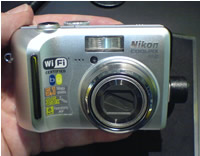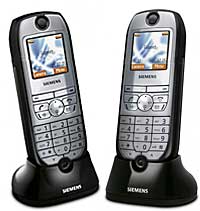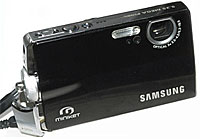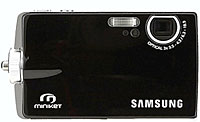 The Economist is a publication that we regard highly. It’s not for nothing that they gained a strong reputation. Sadly a recent piece on the Digital Home let them down.
The Economist is a publication that we regard highly. It’s not for nothing that they gained a strong reputation. Sadly a recent piece on the Digital Home let them down.
In the 3-9 September issue of The Economist, the leader on page 14 tells readers that ‘Most people will never turn their homes into electronic control centres‘ (sub) and that ‘convergence’ will fail.
It’s a well written, witty piece that sadly not only demonstrates the writers lack of understanding of the subject, but their disconnection with the current news.
This summary pieces doesn’t do justice to the full article starting on pages 68 which grasps many of the issues far better.
Returning from a week at IFA, I have some sympathy with the idea that the ‘dream’ that the consumer electronics (CE) companies are try to sell to the public are unlikely to be met immediately – especially in Germany where it is a well known economic fact that the population are holding on to their money with ever more zeal, in terror of losing their jobs in the current economic uncertainty.
I sat in successive press conferences, listening to each CE company CEO tell the assembled analysts and hacks that, unlike the technology companies, They Understood the consumer. This lead them to announce a parade of nearly idential product line-ups, which frankly all blurred into one.
 This was repeated with halls and halls of identikit stands. Remove the brand names and it would have been a challenge to tell them apart.
This was repeated with halls and halls of identikit stands. Remove the brand names and it would have been a challenge to tell them apart.
The exception was Sony, whose bold attempt to live their strap-line, ‘Like.no.other’, lead to a stand that didn’t line up endless products, but played with your senses and tickled your emotions. Sadly the majority of journalists _hated_ it – perhaps saying more about the state of journalism in this fields than the stand itself.
The Tech co view
Until now, the main focus of technology companies has been to sell as much equipment and services to the business market. Having reached total saturation, and business becoming unwilling to comply with the endless cycle of upgrades, having acknowledged that the benefit they bring are not matched by the cost and disruption they bring.
Having acknowledged this years back, the tech companies turned their sights on selling more equipment to the home user, to provide the platform for digital entertainment – which brings us to today.
Where The Economist got it wrong #1 – Convergence
The definition of convergence that they use is long outdated. They’ve interpreted it as the do-it-all device, they use the illustration of “a food processor doubling as a pleasure vibrator for women.”
Until recently, there was an argument that the only successfully converged device was the clock radio. Understanding of the problems have moved on and there are now good examples, such as the Sony Ericsson k750i camera phone, which not only works well as a phone, but has made taking photos a breeze. It contains the vital ingredient – no barrier to easy use.
So what is Convergence?
It’s not unreasonable to ask given the number different definitions it’s had.
Perversely, as more marketing departments in more companies have become involved in flogging convergence, the term itself has become divergent.
We think many things are key to real convergence, and these include
One delivery path – the delivery of digital media over an IP connection.
The coming together of what were previously thought of as different businesses – witness News International embracing video gaming including their recent purchase of IGN.
The combining of layers of information with video or audio; adding further depth to the programme that along it could never provide.
 Where The Economist got it wrong #2 – MSMedia Centre PCs are a failure
Where The Economist got it wrong #2 – MSMedia Centre PCs are a failure
One glaring lack of knowledge of current, relevant news is brought out by the Leader, stating that Media Centre PC’s, or ‘converged super-gadgets’ as they refers to them, have been an utter failure (this is lead by the main article which states that they accounted for ‘fewer than 1% of all PC’s sold last year’ ).
While this may be true for last year, it ignores recent figures from Current Analysis, publish on the 29 August, which found that Media Centre PC sales have ‘skyrocketed’ to 43% of all desktop computer retail sales in the US from the previous levels of around 15% in July. A significant percentage in anyone book.
The Leader comments also fundamentally misunderstand Microsoft. Anyone who has spent anytime watching them will know that they will never let the Media Centre become a failure. Microsoft know if they can control the device to store and access digital media, they can dominate the market.
IFA/Economist blunder
Given the derisory view the Economist of digital home, it was more than a little ironic that they were giving away promotional copies at IFA. A clear example of the right hand (marketing) not knowing what the left hand (editorial) was doing.
 Last year took ourselves to Berlin to attend IFA. Being the first time we’d attended we were _totally_ blow away at the size of the place – it’s massive. Every side of the Consumer Electronics (CE) industry was covered, from the smallest to the largest with the later building their own houses (Siemens, Deutsche Telekom).
Last year took ourselves to Berlin to attend IFA. Being the first time we’d attended we were _totally_ blow away at the size of the place – it’s massive. Every side of the Consumer Electronics (CE) industry was covered, from the smallest to the largest with the later building their own houses (Siemens, Deutsche Telekom). Asked why IFA was so loved by trade visitors, his answer was simple, “We treat them as VIP’s. Nothing is too much and they feel very special.” Sounds like a recipe for success to us, one that could easily be learned by many other shows around the world.
Asked why IFA was so loved by trade visitors, his answer was simple, “We treat them as VIP’s. Nothing is too much and they feel very special.” Sounds like a recipe for success to us, one that could easily be learned by many other shows around the world. The Economist is a publication that we regard highly. It’s not for nothing that they gained a strong reputation. Sadly a recent piece on the Digital Home let them down.
The Economist is a publication that we regard highly. It’s not for nothing that they gained a strong reputation. Sadly a recent piece on the Digital Home let them down. This was repeated with halls and halls of identikit stands. Remove the brand names and it would have been a challenge to tell them apart.
This was repeated with halls and halls of identikit stands. Remove the brand names and it would have been a challenge to tell them apart. Where The Economist got it wrong #2 – MSMedia Centre PCs are a failure
Where The Economist got it wrong #2 – MSMedia Centre PCs are a failure Although on the surface Nikon’s brand new Coolpix P1 and the Coolpix P2 cameras look like standard fare from the photo giant, they’ve got a trick up their sleeve – they both offer Wireless LAN support (IEEE802.11b/g).
Although on the surface Nikon’s brand new Coolpix P1 and the Coolpix P2 cameras look like standard fare from the photo giant, they’ve got a trick up their sleeve – they both offer Wireless LAN support (IEEE802.11b/g). This wireless connection lets users transfer images off the camera’s storage card or transmit them ‘live’ as they’re snapped directly to Nikon’s PictureProject software.
This wireless connection lets users transfer images off the camera’s storage card or transmit them ‘live’ as they’re snapped directly to Nikon’s PictureProject software. As for the Coolpix P1 and P2 cameras, there’s nothing much to get too excited about, with the two identical cameras offering 8.0 and 5.1 Megapixels respectively with a 3.5x optical zoom (36-126mm equivalent, f2.7 – 5.2).
As for the Coolpix P1 and P2 cameras, there’s nothing much to get too excited about, with the two identical cameras offering 8.0 and 5.1 Megapixels respectively with a 3.5x optical zoom (36-126mm equivalent, f2.7 – 5.2). Framing and viewing images is taken care of with a sizeable 110,000 pixels 2.5″ TFT LCD screen and there’s a SD slot and USB 2.0 connectivity onboard.
Framing and viewing images is taken care of with a sizeable 110,000 pixels 2.5″ TFT LCD screen and there’s a SD slot and USB 2.0 connectivity onboard. Promptly filed under “Gimme! Gimme! Gimme!” at first peek, Toshiba are debuting a portable LED pocket projector at the Internationale Funkaustellung (IFA) trade show 2005 in Berlin.
Promptly filed under “Gimme! Gimme! Gimme!” at first peek, Toshiba are debuting a portable LED pocket projector at the Internationale Funkaustellung (IFA) trade show 2005 in Berlin. Inside there’s a panel fitted with different coloured LEDs which serve both as the light source and the means to determine the colour of the projected images.
Inside there’s a panel fitted with different coloured LEDs which serve both as the light source and the means to determine the colour of the projected images. Siemens have announced their new Gigaset SL75 WLAN Voice-over-IP (VoIP) cordless telephone for the home.
Siemens have announced their new Gigaset SL75 WLAN Voice-over-IP (VoIP) cordless telephone for the home. Decked out in (ahem) “the season’s high fashion colour night grey”, the Gigaset SL75 WLAN sports a colour display (128×128 pixels, 4k/65k colors) and comes with a small docking station.
Decked out in (ahem) “the season’s high fashion colour night grey”, the Gigaset SL75 WLAN sports a colour display (128×128 pixels, 4k/65k colors) and comes with a small docking station. Samsung have unveiled their sleek, credit-card sized Miniket VP-MS15 digital camera at the Berlin IFA show.
Samsung have unveiled their sleek, credit-card sized Miniket VP-MS15 digital camera at the Berlin IFA show. Connecting the Miniket via USB 2.0 also lets it be used as a Webcam or a ‘portable hard drive’.
Connecting the Miniket via USB 2.0 also lets it be used as a Webcam or a ‘portable hard drive’. Samsung have also released two identical-looking smaller brothers to the MS15; the VP-MS11, with 128MB of onboard memory. and the VP-MS10 with 64MB.
Samsung have also released two identical-looking smaller brothers to the MS15; the VP-MS11, with 128MB of onboard memory. and the VP-MS10 with 64MB. Deutsche Telekom have just announced that they will be rolling out 50 Mbit/s connection in 50 cities around Germany by 2007.
Deutsche Telekom have just announced that they will be rolling out 50 Mbit/s connection in 50 cities around Germany by 2007. The “we’ll make the country globally competitive by installing high speed Internet access, but it needs to be made worth our while” argument has been used before by other incumbent telcos when they are trying to get good, or better deals from the regulators.
The “we’ll make the country globally competitive by installing high speed Internet access, but it needs to be made worth our while” argument has been used before by other incumbent telcos when they are trying to get good, or better deals from the regulators. As with all companies at IFA, Grundig have shown a ton of new products, try to persuade the assembled throngs that they are approaching Digital Lifestyles by understanding the consumer.
As with all companies at IFA, Grundig have shown a ton of new products, try to persuade the assembled throngs that they are approaching Digital Lifestyles by understanding the consumer. Samsung will be debuting the world’s first 19″ notebook, the Samsung M70, on 2 September at the IFA Consumer Electronics Show in Berlin.
Samsung will be debuting the world’s first 19″ notebook, the Samsung M70, on 2 September at the IFA Consumer Electronics Show in Berlin. This lets users detach the laptop’s screen and place it in a dock to give the appearance of a conventional desktop.
This lets users detach the laptop’s screen and place it in a dock to give the appearance of a conventional desktop. Despite the added complexity and enormous screen size, Samsung have claimed that the laptop will weigh no more than their current 17-inch notebook so it should be vaguely portable (if you work out at the gym).
Despite the added complexity and enormous screen size, Samsung have claimed that the laptop will weigh no more than their current 17-inch notebook so it should be vaguely portable (if you work out at the gym).